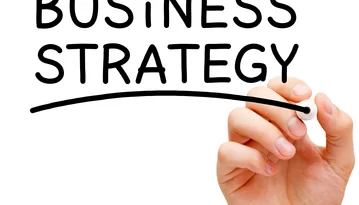How To Become an Overnight Success With Your Startup
How long does it take for a startup to achieve “overnight success” and what does it take to get there?
Mistral AI just raised a record $113 million exactly one month after formation. This is going to go poorly. Maybe not for Mistral themselves, with a founding team of former Google and Meta folks, challenging OpenAI for the throne of Generative AI.
The jury will be out on that one for a while, as they now have plenty of screw-up money to burn through. The damage will be done when the overnight success window of Generative AI slams shut.
I’m concerned for:
- The next 100 startups who raise obscene amounts of FOMO VC on “me too” ideas that are more pseudo-science than viable businesses.
- The next 1,000 startups who spend chunks of their time and money fitting the square peg of “AI” (my quotes) into the round hole of their business model.
- The next 10,000 founders who make painful and costly decisions for their startup in the name of chasing Mistral’s $135 million overnight success.
It’s like a pyramid of failure built on a base of plaster.
But don’t get me wrong. This isn’t about AI. – AI. is the real thing, and a big thing, and a serious thing. I’ve been working with Generative AI for almost 15 years, and it’s been good to me.

I’m not worried about the AI angle. I’m worried about the overnight success bit.
Success is Boring
A headline like Mistral’s $135 million windfall is a particularly tough windmill to tilt at.
When a startup makes splashy headlines, seemingly coming out nowhere to raise a massive funding round or get acquired before you’ve even heard of them, what usually gets swept under the rug is the time, sweat, money, and lucky breaks that put them into that position.
That stuff works against the headline clickbait, and rarely even makes the 10th paragraph of the story.
For every Mistral that attracts a once-a-decade lightning strike, there were thousands of other lightning-rod startups before them who didn’t get struck, and there will be thousands after them chasing the smoke from that strike and left holding the bag when it clears.
I know. “Shut the hell up, Joe. It’s $135 million. In a month. Go back to your rocking chair.”
So I do. But you know what else is boring? Making your first sale.
Look, I don’t know exactly how long it takes for a startup to become an overnight success, but it damn sure isn’t a month. Because there are four gates every startup has to pass through during the overnight success growth stage.
Here they are.
Zero to One
It all starts with a brilliant idea. Now, I can’t tell you whether or not your idea is brilliant, but I recently wrote an article that will help you figure it out for yourself.
That said, having a killer idea isn’t a guarantee for success, it’s just a prerequisite. As I stated at the end of that article: None of my ideas for products or companies have come from a single point of inception, and that’s where a lot of new founders get tripped up.
The conventional wisdom seems like you get an idea, you draft the plans, you hire the workers, you find the customers. That’s the derivative of every business school definition of starting up. And to some extent, it’s correct. But that’s like giving someone directions to a destination by only telling them that it’s 500 miles away.
I mean, that’s accurate. It just isn’t helpful.
So while an entrepreneur should be focused on the destination, they need to break down the journey or they’ll never get there, especially overnight. You can still do it fast, and that’s where your talent comes into play.
The first step on that path is to go from zero to one. And if your original idea is indeed worthy, you’re going to need several more worthy ideas to get that idea off of paper and into concept through to reality. Your goal is a single sellable product or service, and eventually, your first sale.
Every journey starts with a first step. That first step isn’t the brilliant idea or the cool product or the company formation. It’s the first paying customer. Don’t spend your inception time focused on a million customers, focus on your first. Learn everything you can from that.
If that happens overnight, great, you’ve still got time.
One to More
This is graduation from the idea stage into the early stage. This isn’t about growth, it’s about viability.
Once you’ve made your first sale, how do you do it over and over again?
I used to say that a startup should land its first customer, learn from it, then land a second customer, learn from that, and keep taking baby steps until about 10 customers. But I understand that’s too slow and pragmatic, especially these days when we’re letting machines do a lot of the learning for us.
So I’ve revised that strategy a bit. Once you learn all you can from selling to one customer, figure out how to sell to 10, or 100, or whatever number seems like a stepping stone that won’t knock over your operation.
The problem here isn’t that the answer is particularly difficult. The problem is that there are too many ways to cheat in the rush to overnight success.
One of them is raising a lot of money. Don’t fall for the conventional wisdom that your next step must be building the machine that can sell to millions of customers – a proposition that requires raising millions of dollars. Instead, your next step should be selling to multiple customers at once, reducing costs and gaining small economies of scale along the way.
More to Many
Once your startup can sell to multiple customers at once, whether through bulk sales, partnerships, automation, or a combination, you’ve entered the start of the growth stage.
Now you need to capitalize. And that could mean raising actual capital, or it could mean using your talent, like I talked about earlier, to generate even more innovative ideas for getting from one multiple sale to many multiple sales.
- Can you build on your automation in marketing, sales, fulfillment, and operations?
- Can you exploit greater economies of scale from what you learned in the early stage?
- Can you consistently grab more and more market share for lower customer acquisition costs (CAC)?
- Can you extend lifetime value (LTV), raise margins, and grow EBITDA while still growing revenue?
Get here and you’re a legit growth company. This is usually the point where those large fundraises get announced. It doesn’t happen overnight but it could happen quickly.
One thing is for sure, it rarely happens without concrete proof of traction, which you can provide by answering at least three of those four questions above – the last one can be optional but it’ll ding your valuation if you can’t prove it.
Many to Multitudes
The late growth stage is about feeding armies of customers, repeatedly, and at a profit.
It almost sounds biblical, you know, fish and loaves, but it’s basically evolving your startup into a well-oiled machine, engaging in a constant rinse-and-repeat of the previous step while managing growth and continuing to innovate to meet the needs of an ever-shifting market.
This is the path to exit. This is your overnight success. I don’t know for sure, it’s my belief that evolution takes time. Survival of the fittest, natural selection, and all that.
I can’t tell you how to get there or how long it will take, but I can tell you that every startup’s path is unique. You can’t copy someone else’s – whether that someone is Meta or Mistral – and expect the same results.
You can do it overnight, just don’t be surprised if it takes 10 years or more.
Source: incafrica.com




